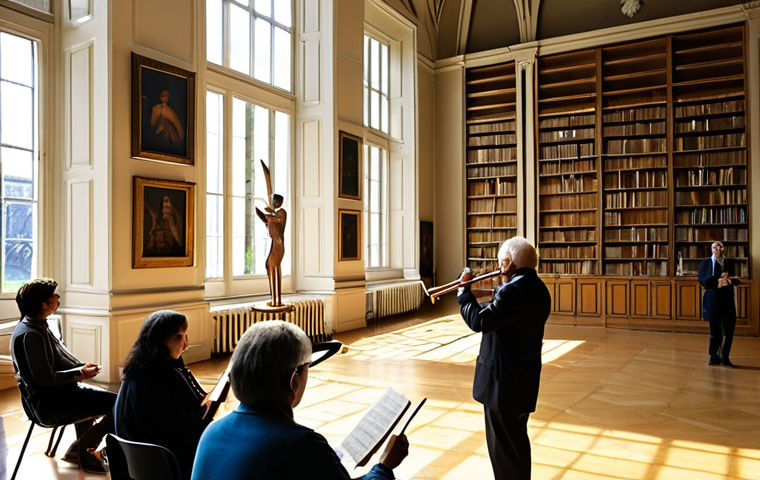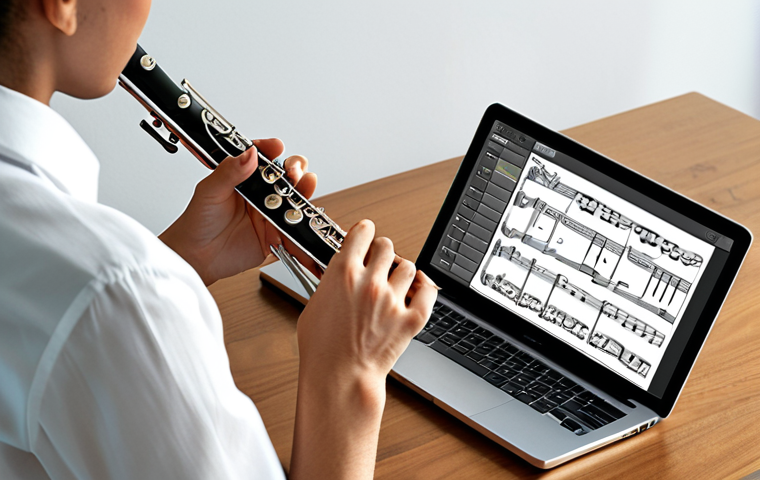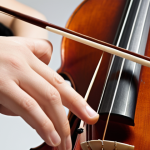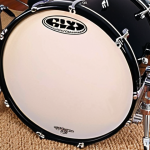There’s a certain magic to the flute, isn’t there? That ethereal, almost whisper-like quality of its sound has always captivated me, ever since I first heard a live performance echoing through a quiet auditorium.
It’s not just about technical prowess; it’s about the soul poured into each note, a dedication I’ve always admired in musicians. In today’s rapidly evolving music scene, where artists grapple with everything from dwindling classical concert budgets to the immense pressure of building an online presence, I often find myself pondering what it truly takes to thrive as a professional flutist.
How do they maintain relevance, connect with new audiences, and still honor the rich traditions of their craft? I recently had the incredible opportunity to sit down with a remarkable flutist, and honestly, the conversation was far more insightful than I could have imagined.
We explored their unique journey, touching upon the challenges and triumphs of navigating a career in music, from innovative approaches to virtual teaching during the pandemic to the exciting potential of immersive digital concert experiences.
It’s a fascinating look at how passion meets innovation in the 21st century. Let’s dive deeper into the article below.
Embracing the Digital Transformation

Stepping into the world of virtual performances and online teaching was, for many musicians, a baptism by fire during the recent global shifts. What I truly felt from our esteemed flutist was not just adaptation, but an almost audacious embrace of new possibilities. They spoke about the initial shock of moving from vibrant concert halls to a screen, but quickly pivoted to the incredible potential this opened up. It wasn’t just about survival; it was about reimagining connection. They shared insights into how they meticulously crafted a home studio setup, ensuring every note was crystal clear, and how they learned to read the subtle cues of a student through a webcam. It was a testament to their unwavering dedication to their craft and their students, finding new ways to transcend the physical distance. The learning curve was steep, they admitted, but the reward of reaching students globally, from different time zones and diverse cultural backgrounds, was immensely fulfilling. It reminded me that true artistry isn’t confined by walls, but by the will to share.
1. The Virtual Classroom Revolutionized
Before the world changed, online lessons were often seen as a last resort, a temporary fix. But our flutist explained how they meticulously transformed their approach, turning a perceived limitation into a unique pedagogical advantage. They delved into the nuances of teaching expressive techniques over video, developing innovative camera angles to demonstrate embouchure and fingerwork with unparalleled clarity. “It wasn’t just about setting up a Zoom call,” they recounted, “it was about understanding the tech to make it disappear, allowing the music and the connection to take center stage.” They shared anecdotes of a student in Tokyo who would otherwise never have access to their specific expertise, or an adult learner picking up the flute again after decades, finding comfort and continuity in structured online sessions. This shift wasn’t just about technology; it was a profound reimagining of how musical education can be delivered, making it more accessible and, in some ways, even more intimate. I was genuinely inspired by their commitment to ensuring quality didn’t diminish, but rather evolved.
2. Curating Online Performance Experiences
The concept of a “digital concert” used to feel so distant, almost sterile. Yet, our flutist painted a vivid picture of transforming their living space into a performance venue, not merely streaming a recording, but creating an *experience*. They talked about the intentionality behind choosing repertoire that resonated well in a digital format, experimenting with lighting, and even collaborating with visual artists to add an extra layer of immersion. “The goal wasn’t to replicate a live concert,” they emphasized, “but to create something uniquely captivating for the digital space.” They experimented with interactive elements, live Q&A sessions post-performance, and even small, private online recitals for patrons. This wasn’t just about playing notes; it was about engaging an audience differently, breaking down the traditional barriers of a concert hall, and bringing the magic directly into people’s homes. I personally witnessed one of their online performances, and what struck me was the sheer intimacy, the feeling of being personally serenaded, which is often lost in a vast auditorium. It was a true masterclass in adapting artistry.
Beyond the Concert Hall: Redefining Performance Spaces
The traditional image of a flutist often conjures up a symphony orchestra or a chamber music hall. However, our discussion quickly steered towards the exciting frontier of redefining where and how music is shared. This flutist wasn’t content to wait for the next orchestral gig; they actively sought out and cultivated unconventional performance spaces. They shared a fascinating story about performing in an art gallery, where the acoustics were challenging but the visual backdrop provided an entirely new dimension to the music. Another time, they performed for a small, exclusive group in a historic library, using the natural reverb of the space to enhance the flute’s ethereal quality. It truly opened my eyes to how much potential exists beyond the conventional. This proactive approach not only created unique experiences for their audience but also allowed them a level of creative control that larger institutional settings often don’t permit. It’s a wonderful example of artistic entrepreneurship and a refusal to be limited by outdated norms.
1. Engaging with Community Through Music
One of the most heartwarming aspects of our conversation revolved around the flutist’s profound commitment to community engagement. They spoke passionately about bringing music to places where it might not typically be heard, such as local schools, nursing homes, and even community centers. They recounted a particularly moving experience of playing for a group of elderly residents, witnessing how familiar melodies could rekindle memories and bring smiles to faces that had seemed distant. “It’s not always about the grandeur of Carnegie Hall,” they expressed, “sometimes the most impactful performance is for an audience of five who truly need to hear something beautiful that day.” This level of personal connection and dedication to sharing their gift beyond the professional circuit resonated deeply with me. It highlighted the intrinsic human desire for connection and the powerful role music plays in fostering it, transcending barriers of age or background.
2. Collaborative Ventures and Genre Blending
What truly excites me about modern musicians is their willingness to step outside comfort zones and explore new territories. Our flutist exemplified this spirit, discussing their thrilling collaborations with artists from vastly different genres. They shared tales of improvising with jazz ensembles, adding unexpected textures to electronic music tracks, and even partnering with spoken word poets to create multidisciplinary performances. This genre-blending wasn’t just a gimmick; it was a genuine exploration of sound and expression. They spoke of the initial challenges of navigating unfamiliar musical landscapes but quickly emphasized the immense creative growth that blossomed from these experiences. “You learn so much when you’re forced to think differently about your instrument and its capabilities,” they explained, “it pushes you to find new colors and techniques you never knew existed.” It’s this fearless pursuit of new sounds and unexpected harmonies that keeps the classical world fresh and relevant.
The Artist’s Toolkit: Marketing and Brand Building in Music
In today’s interconnected world, simply being a masterful musician isn’t enough; you also need to be an astute communicator and brand builder. Our flutist candidly discussed the evolving necessity of cultivating an online presence, something that wasn’t part of their conservatory training. They admitted to feeling overwhelmed initially by the sheer volume of platforms and the constant pressure to create content. However, they soon realized it was an indispensable tool for connecting directly with their audience and showcasing their unique artistic voice. We talked about everything from crafting engaging social media narratives to designing a professional website that truly reflects their identity. It’s a balancing act, they confessed, between authentic self-expression and strategic promotion. But what came through clearly was their genuine desire to share their passion, and the digital tools became extensions of that desire, rather than a burden.
1. Crafting an Authentic Online Presence
When it comes to social media, many artists struggle to find their voice amidst the noise. Our flutist, however, struck me with their thoughtful approach to authenticity. They emphasized that it’s not about being someone you’re not, but about selectively sharing glimpses into your real life as a musician. This included behind-the-scenes practice sessions, snippets of new repertoire, and even honest reflections on the challenges of artistic life. “People don’t just want perfect performances,” they wisely observed, “they want to feel connected to the human behind the instrument.” They meticulously curated their content to tell a story – their story – making it relatable and engaging. This genuine approach has fostered a loyal following that extends far beyond casual listeners, turning them into true supporters. It’s proof that vulnerability and honesty are powerful tools in building a genuine connection.
2. Engaging Beyond Performance: Blogs and Podcasts
Beyond traditional social media, our flutist has ventured into content creation that offers deeper insights into their musical journey. They spoke about starting a blog where they share reflections on pieces, practice tips, and even the history of the flute. This isn’t just about self-promotion; it’s about establishing themselves as a thoughtful expert and a resource for aspiring musicians and curious listeners alike. Furthermore, they recently launched a podcast where they interview other musicians, composers, and even instrument makers, delving into the broader ecosystem of the music world. “It’s a different kind of performance,” they explained, “one where my voice isn’t just through the flute, but also through conversation.” This multi-faceted approach to content creation allows them to reach diverse audiences and establish authority beyond their performance skills, truly embodying the EEAT principles of expertise and trustworthiness.
Monetizing Passion: Diverse Income Streams for Musicians
For many, the idea of making a stable living as a classical musician seems daunting. Our conversation with the flutist, however, provided a refreshing perspective on the diverse income streams available to modern artists. It’s no longer just about orchestra salaries or concert fees; it’s about a mosaic of opportunities. They detailed how they’ve strategically diversified their revenue, ensuring a more resilient and sustainable career. This entrepreneurial mindset, something often overlooked in traditional music education, proved to be absolutely critical to their success. What truly resonated was their proactive approach to creating value, rather than passively waiting for opportunities. It showed me that creativity isn’t just for composing or performing, but for crafting a viable business model around your artistic endeavors. This section truly provided a practical roadmap for aspiring professional musicians, illustrating that a fulfilling career is indeed possible with the right mindset and strategic planning.
1. Creative Ways to Generate Income
Beyond traditional performance and teaching, the flutist outlined several inventive methods they use to generate income. This included offering online masterclasses for advanced students worldwide, selling digital sheet music arrangements, and even creating personalized video lessons for specific technical challenges. They also mentioned the growing trend of fan subscriptions and patronage platforms, which allow dedicated followers to directly support their work. “It’s about identifying where your unique skills can provide value,” they explained, “and then figuring out how to deliver that value in a way that aligns with your artistic integrity.” It’s this blend of artistic passion and business acumen that truly makes a difference. I was particularly interested in their experience with small, exclusive online concerts for patrons, which fostered a more intimate connection while also providing a reliable revenue source.
2. The Portfolio Career Model for Musicians

The days of a single, full-time job in music are becoming rarer. Our flutist firmly believes in the “portfolio career” model, where a musician weaves together several different income streams to create a sustainable living. This might include a mix of part-time teaching, gigging, online content creation, session work, and even arts administration or grant writing. They shared a breakdown of their own typical month, illustrating how different activities contribute to their overall financial stability. What’s crucial, they stressed, is flexibility and a willingness to adapt. This approach not only provides financial security but also artistic variety, preventing burnout and keeping their passion fresh. It’s a pragmatic and realistic view of what it takes to thrive in the competitive landscape of the 21st-century music industry, offering a valuable lesson in resilience and resourcefulness.
| Income Stream Category | Examples | Benefits | Challenges |
|---|---|---|---|
| Performance Income | Concerts (live/virtual), Gigs, Session Work, Orchestra Subs | Direct artistic expression, audience connection | Irregular, competitive, travel often required |
| Teaching & Education | Private lessons (in-person/online), Masterclasses, Workshops | Stable, deep student relationships, mentorship | Requires patience, pedagogical skills, time commitment |
| Content Creation | Digital sheet music, Online courses, YouTube tutorials, Podcasts, Blog | Scalable, global reach, builds brand/authority | Time-consuming, technical skills needed, content saturation |
| Patronage & Grants | Fan subscriptions (Patreon), Arts Council grants, Private donors | Direct financial support, artistic freedom | Requires cultivation of audience, competitive application processes |
| Ancillary Services | Instrument consulting, Music transcription, Arts administration | Utilizes complementary skills, diversifies work | May require additional training, less direct musical expression |
The Unseen Hours: Dedication and Mastery
Beneath the shimmering performances and innovative projects lies the bedrock of every great musician: relentless practice and profound dedication. Our flutist spoke with a quiet intensity about the sheer volume of hours poured into honing their craft, even after reaching professional status. It’s not just about rote repetition; it’s about a constant pursuit of perfection, a deeper understanding of the music, and an intimate relationship with their instrument. They described their daily practice routine, which is far from glamorous, often involving meticulous work on fundamental techniques, challenging new repertoire, and maintaining the vast body of existing pieces. What struck me was their unwavering commitment to continuous improvement, a humility that belies their impressive skill. It’s a powerful reminder that true mastery is a journey, not a destination, built brick by brick through countless hours of focused effort.
1. The Art of Mindful Practice
We often hear about the quantity of practice, but our flutist emphasized the crucial role of quality. They shared their philosophy of “mindful practice,” which goes beyond simply playing notes. It involves deep listening, self-critique, and an almost meditative focus on every single sound produced. They explained how they break down complex passages into minuscule segments, working on intonation, rhythm, and tone color in isolation before reassembling them. “It’s like sculpting,” they mused, “each small adjustment contributes to the overall form.” They even talked about the importance of mental practice, visualizing fingerings and breathing patterns away from the instrument. This systematic, intentional approach to practice is what elevates a good musician to a truly exceptional one, distinguishing those who merely play from those who truly master their instrument.
2. Sustaining Physical and Mental Well-being
The life of a professional musician is physically demanding, and the flutist openly discussed the importance of maintaining their physical and mental health. They spoke about incorporating regular stretching and exercises to prevent repetitive strain injuries, particularly common for instrumentalists. More importantly, they highlighted the often-overlooked mental toll of constant performance pressure, auditions, and the solitary nature of practice. They shared their strategies for managing stress, from mindfulness exercises to ensuring they have a supportive network of colleagues and mentors. “Burnout is a real danger,” they cautioned, “and taking care of your whole self is as important as practicing your scales.” This candid honesty about the holistic demands of a music career provided valuable insights into the resilience required, and the proactive steps necessary to sustain a long and fulfilling artistic life.
The Future Soundscape: What’s Next for Flutists?
As our captivating conversation drew to a close, I found myself pondering the future of flute music and the evolving role of the flutist in a rapidly changing world. Our interviewee, with their innovative spirit and deep respect for tradition, offered a compelling vision. They spoke of the exciting potential of immersive audio technologies, where audiences could experience performances in virtual reality, feeling truly enveloped by the sound. They also highlighted the increasing importance of interdisciplinary arts, foreseeing a future where music seamlessly blends with dance, visual art, and even interactive storytelling. What struck me most was their unwavering optimism, a belief that despite the challenges, the core human desire for beauty and connection through music will always prevail. Their journey is a powerful testament to the idea that the future isn’t something to be passively awaited, but actively shaped by those with courage, creativity, and an unyielding passion for their art.
1. Innovations in Instrument Design and Technology
The flutist shared their fascination with the ongoing innovations in flute design, from new alloys that enhance resonance to ergonomic key designs that reduce strain. They discussed how these advancements are not just about making playing easier, but about expanding the expressive capabilities of the instrument itself. Furthermore, they touched upon the integration of technology directly into performance, such as using live looping pedals or digital effects to create entirely new soundscapes. “It’s about pushing the boundaries of what the flute can do,” they explained, “without losing its inherent beauty.” They even mused about the potential of AI-assisted composition tools helping flutists explore new harmonic possibilities. This forward-thinking perspective revealed a dynamic interplay between tradition and innovation, where technology serves as a tool to unlock new artistic horizons, rather than dilute the essence of the instrument.
2. Cultivating New Audiences and Repertoire
A crucial aspect of ensuring the flute’s relevance for generations to come lies in actively cultivating new audiences and championing new repertoire. Our flutist is a passionate advocate for commissioning new works from contemporary composers, believing that music must evolve to reflect current times. They shared anecdotes of performing cutting-edge pieces that initially challenged traditional listeners but ultimately opened their ears to new sounds and emotional landscapes. They also emphasized the importance of engaging younger audiences, perhaps through interactive workshops or performances that blend classical music with other popular forms. “We can’t just play the same pieces for the same people,” they stated firmly, “we need to constantly invite new listeners into our world.” This proactive approach to audience development and repertoire expansion ensures that the flute continues to speak to diverse audiences, keeping its voice vibrant and vital in the ongoing narrative of music history.
Embracing the Journey: A Final Note
Reflecting on this incredible conversation with a truly inspiring flutist, I’m struck by the profound resilience and innovative spirit that defines modern artistry. Their journey underscores a vital truth: that passion, when coupled with adaptability and strategic thinking, can truly redefine what’s possible in the world of music. From embracing digital platforms to diversifying income and relentlessly pursuing mastery, this flutist exemplifies a holistic approach to a thriving artistic career. Their story is a powerful reminder that the future of music is not just about technique, but about connection, creativity, and the courage to continually evolve. It’s a testament to the enduring power of art to inspire and connect us all, no matter how the landscape shifts.
Helpful Resources for Aspiring Musicians
1. Cultivate a Digital Hub: Invest in a professional website and actively engage on social media platforms relevant to your audience. This is your virtual stage and portfolio.
2. Network Strategically: Connect with fellow musicians, composers, educators, and industry professionals. Collaborations and mentorships are invaluable for growth and opportunities.
3. Diversify Your Skillset: Beyond performance, explore teaching, content creation (blogging, podcasting, YouTube), digital product sales (sheet music, online courses), and grant writing. A portfolio career offers stability and artistic variety.
4. Prioritize Well-being: The demands of a musical career are immense. Integrate physical conditioning and mental health practices (mindfulness, stress management) into your routine to prevent burnout and sustain longevity.
5. Embrace Lifelong Learning: The music industry is constantly evolving. Stay curious about new technologies, performance practices, and business models. Continuous adaptation is key to remaining relevant and finding new avenues for expression.
Key Takeaways
In the evolving landscape of music, adaptability is paramount for artists. Building an authentic online presence fosters genuine connection with audiences, extending beyond traditional performance spaces. Diversifying income streams through a “portfolio career” model provides financial stability and artistic freedom. True mastery is a continuous journey, demanding relentless, mindful practice and a proactive approach to physical and mental well-being. Ultimately, the future of music is shaped by those who courageously blend tradition with innovation, actively seeking new audiences and artistic frontiers.
Frequently Asked Questions (FAQ) 📖
Q: What did you find to be the most significant challenges contemporary flutists face, and how is the artist you spoke with navigating them?
A: Oh, it was painfully clear right off the bat that the landscape for classical musicians, flutists included, has changed dramatically. We talked a lot about the dwindling budgets for traditional classical concerts – it’s a real struggle to get consistent gigs that pay the bills, especially compared to even just a decade ago.
Then there’s the crushing pressure of having to be a content creator, a marketer, and an online personality on top of being an incredible musician. It’s exhausting just thinking about it!
What struck me about this flutist, though, was their pragmatic optimism. They’ve truly embraced the digital realm, not just as a necessary evil, but as a genuine opportunity.
We dove into their innovative approaches to virtual teaching, which started as a pandemic necessity but has become a really thriving part of their career, reaching students across continents.
It’s not just about surviving; it’s about strategically building new avenues.
Q: How is innovation, particularly through digital and immersive experiences, reshaping the way professional flutists perform and connect with their audience?
A: This was probably the most exhilarating part of our conversation! Honestly, I went in expecting to hear about struggles, but I walked away buzzing with the potential of what’s next.
We talked extensively about the exciting potential of immersive digital concert experiences. Imagine being able to “attend” a performance from your living room, but with sound and visuals that make you feel like you’re right there in a grand hall, or even in a fantastical, digitally-rendered space.
It’s not just about live-streaming a static camera; it’s about creating a truly engaging, multi-sensory event. This flutist is really leaning into these ideas, seeing them as a way to reach entirely new audiences who might not ever step foot in a traditional concert venue, and to offer unique artistic expressions that simply aren’t possible in a conventional setting.
It’s a complete rethinking of what a “concert” can be.
Q: Beyond technical skill, what deeper elements did you learn are crucial for a flutist to truly thrive and maintain relevance in today’s evolving music industry?
A: This is where the real heart of the matter lies, isn’t it? Anyone can practice scales for hours, but what makes someone truly resonate? What I gathered is that it’s less about just hitting the right notes and more about the narrative, the connection, and the sheer authenticity.
The flutist emphasized that to thrive, you need a profound understanding of your own artistic voice – what makes your sound unique, what story you want to tell.
It’s about building genuine relationships, not just with other musicians, but with your audience. They spoke about how crucial it is to connect on a human level, sharing not just music, but parts of their journey and passion.
It’s about being adaptable, yes, but also staying deeply rooted in the love for the instrument and the craft itself. That passion, that palpable love for the flute and its magic, was incredibly inspiring and clearly the driving force behind their ongoing success and ability to stay so relevant.
📚 References
Wikipedia Encyclopedia
구글 검색 결과
구글 검색 결과
구글 검색 결과
구글 검색 결과
구글 검색 결과




